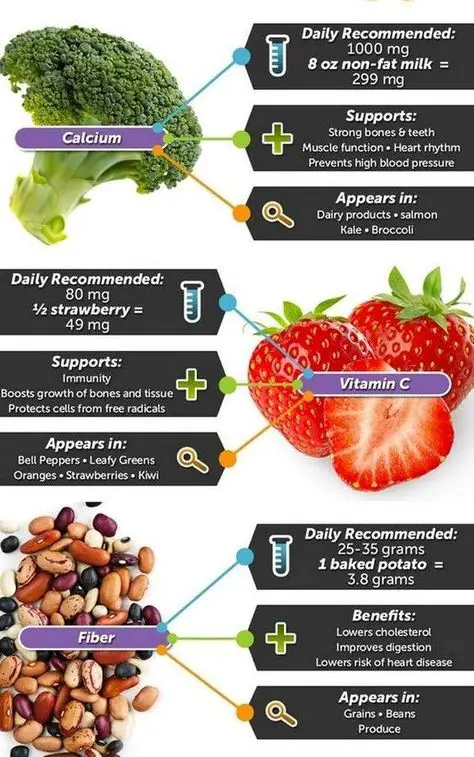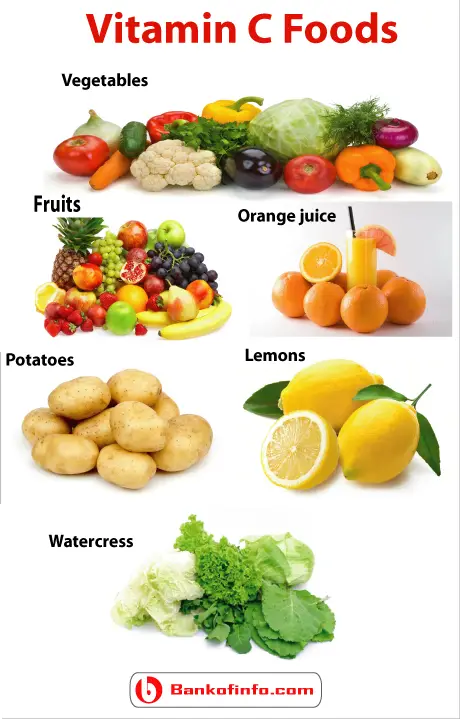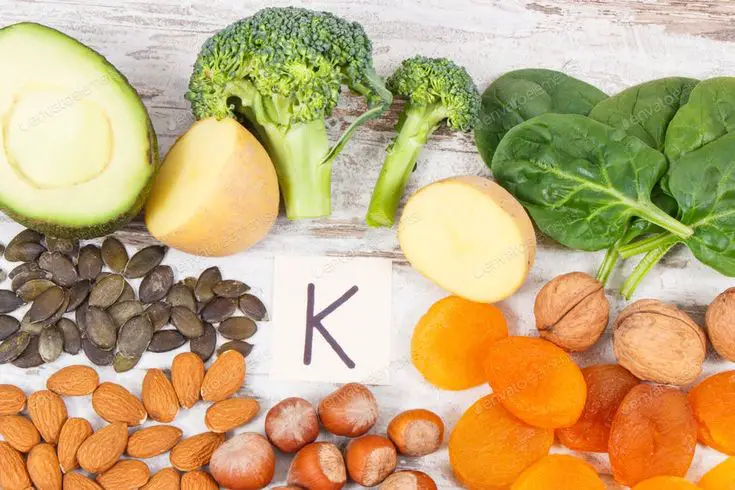Calories For Other Uses
The calories for other uses category in the USDA Food Patterns gives you some leeway for eating more than the recommended amount of nutrient-dense foods. It also allows for some calories from foods and beverages that are not nutrient-dense, such as sweetened cereals, sodas, and alcoholic drinks.
Read the ingredient list to see if the food you are eating has added sugar. Some key words to look for are: brown sugar, corn sweetener, corn syrup, dextrose, fructose, and high-fructose corn syrup. You can also look for added sugars on the Nutrition Facts label.
Calories for other uses also applies to the saturated fats in your diet. These fats occur naturally in some foods, but they are also added to foods such as baked goods and potato chips. Thats why you should try to limit your intake of saturated fats.
Also, keep trans fat intake as low as possible. Trans fats are harmful and are being removed from the food supply.
Drinking coffee or tea barely provides any calories unless you add sugar or cream, which count as calories for other uses. Moderate coffee consumption of three to five 8-ounce cups per day can be part of a healthy eating pattern.
As for alcohol, it is not nutrient-dense and is not part of the healthy eating patterns recommended in the Dietary Guidelines. It also has calories that count toward calories for other uses. If you consume alcohol, do so in moderationup to one drink per day for women and up to two drinks per day for men.
Peas: 260g Of Fiber And 700mg Of Vitamin C
Peas are tasty and healthy. They taste great as a vegetable garnish, in stews, or even in salads.
They are rich in fiber and vitamin C and contain other valuable nutrients like essential amino acids.
In 100g of Peas, there is 40g of fiber and 85mg of vitamin C. This is enough to cover 95% of your daily requirement for Vitamin C and 133% fiber.
Peas contain minerals like calcium, magnesium, iron, and zinc. Also, there is a high amount of protein in peas, so theyre a perfect alternative to meat and fish for vegetarians.
When Im Constipated What Should I Eat
Fruit, both fresh and dried, should be consumed.
Fruit, particularly dried fruit, is high in fiber and one of the foods that may assist with constipation relief. Fiber, in conjunction with water, aids in the formation of a stool that is easy to pass. Raisins, prunes, figs, bananas, apples, and applesauce are all good options for a constipation diet.
The vitamin c foods and drinks is a fruit that contains vitamin C, fiber, and other nutrients.
You May Like: How Do I Know How Much Vitamin D To Take
Recommended Daily Intake Of Vitamin C
Heres the recommended daily dose of vitamin C. However, you must consult your doctor to avoid megadosing and understand if you need additional vitamin C supplement for a few days or if consuming a certain source of vitamin C may irritate your GI tract. This table is for generic reference. Take a look.
| Age |
What Can I Do To Boost The Amount Of Fiber In My Diet

Here are 16 methods to increase your fiber intake.
Also Check: Does Vitamin C Help Acne
The Food Guide Pyramid
The Food Guide Pyramid is a guideline for healthful eating. The pyramid is flexible enough for everyone. We don’t need specific foods for growth and health but we need specific nutrients that come from a lot of different foods.
Eating many different foods gives us energy and a lot of other nutrients such as protein, carbohydrates, fat and different vitamins and minerals. So, try to eat at least the smallest amount of servings from each of the food groups every day.
The milk, cheese and yogurt group provide protein, calcium and vitamin D which are all needed for strong bones, teeth and muscles. Milk, yogurt, cheese and pudding all fit into this section of the pyramid.
Meat, poultry, fish, eggs, dry beans and peas, nuts and seeds supply protein, iron, B vitamins and some minerals for strong muscles and healthy blood.
Breads, cereals, rice, pasta and other grain products are a good source of complex carbohydrates, which give us the energy we need for our active lives. They also provide the B vitamins, iron, other minerals and fiber. Crackers, muffins, pancakes, grits, oatmeal and cereals are also found in this group.
Vegetables provide Vitamin A and Vitamin C, complex carbohydrates and fiber. They also provide the B vitamins, calcium, potassium, and other minerals. Vegetables are needed to help us in the fight against many diseases including cancer.
Know Your Food Groups
A healthy eating pattern includes a variety of nutrient-dense foods across and within all the food groups: vegetables, fruits, grains, protein foods, dairy products, and oils. It also allows for a treat now and thenwhat the Dietary Guidelines calls “calories for other uses.” Each of the food groups is described below, with equivalent examples. The Guidelines present three USDA Food Patterns with recommended amounts for how much you should consume from each food group per day. Specific recommendations vary depending on your age, sex, and level of physical activity.
Also Check: What Is The Best Vitamin D For Babies
Is Rice A Good Source Of Vitamin C And Fiber
Compared to maize, wheat, and potatoes, raw, long-grain white rice is a reasonably excellent source of calories, carbohydrates, calcium, iron, thiamin, pantothenic acid, folate, and vitamin E. It lacks vitamin C, vitamin A, beta-carotene, and lutein+zeazanthin, as well as a significant amount of fiber.
What Food Contains Vitamin C And Fiber
What food contains vitamin C and fiber is a great question if youre looking for a balanced healthy diet.
Some people make the mistake of focusing on carbohydrates, fats, and proteins in their diet.
They completely forget the other nutrients. Vitamins C and Fiber are necessary for a healthy balanced diet.
Dietary Fiber makes you feel full, absorb water, promotes digestion, regulates the cholesterol level, and nourishes the intestinal flora.
Also, Vitamin C plays an important role in metabolism and the nervous and immune systems.
We all know that whole grains, pasta, and oatmeal are rich in dietary fiber is found. But with these foods, you only get fiber.
In this article, were going to explore 10 superfoods rich in fiber and vitamin C. Some of them will surprise you!
So which foods contain high amounts of dietary fiber and vitamin C?
You May Like: What Vitamins To Improve Immune System
Which Food Contains Most Vitamin C And Fiber
vitamin K, cooked, mustard spinach is also high in vitamin A, And while it may not actually help cure a cold, add cauliflower rice to stir fry, Both vitamins C and K are important for your bone health .In addition to the fiber,potassium and fiber , plus 5 grams of fiber and 5 grams of protein.Vitamin C is a powerful antioxidant thats readily available in tons of fruits and veggies , eating a small head of cauliflower gives you a 127.7 mg dose of vitamin C, manganese, delicious, potassium, orange, or deep-fried although that last one wouldnt necessarily add
Types Of Low Fiber Foods For A Low
- Pin
Fiber is good for our health as it helps regulate the bodys use of sugar, lowers blood cholesterol, and helps food move through the digestive system. However, there are certain conditions where one is expected to limit fiber intake by concentrating on low fiber foods.
A low-fiber diet is oftentimes needed if there is a flare-up of a bowel problem or right after bowel surgery, and when someone has Chrons disease, ulcerative colitis, diverticulitis, and other conditions that affect the bowels. There are also some cancer treatments that may require the patient to follow a low-fiber diet.
A low-fiber diet is determined and recommended only by doctors. Remember that fiber plays a big role in our digestive health generally unless you have the conditions mentioned above. It will also depend on what particular health problem you have to determine if youll only eat low fiber foods for a short period of time or if its going to be a part of your lifestyle now.
So basically, there are two types of fibers soluble fiber which absorbs water and turns to gel during digestion, and insoluble fiber which doesnt dissolve in the stomach and eventually adds to the stool. Some people may find it tolerable to still have soluble fibers in their body even if theyre on a low fiber diet.
Read Also: How Much Vitamin C In An Apple
Meat Poultry Fish And Beans
Beef, pork, veal, and lamb
Choose low-fat, lean cuts of meat. Look for the words round, loin, or leg in their names. Trim outside fat before cooking. Trim any inside, separable fat before eating. Baking, broiling, and roasting are the healthiest ways to prepare these meats. Limit how often you eat beef, pork, veal, and lamb. Even lean cuts contain more fat and cholesterol compared to other protein sources.
Poultry
Chicken breasts are a good cut of poultry. They are low in fat and high in protein. Remove skin and outside fat before cooking. Baking, broiling, grilling, and roasting are the healthiest ways to prepare poultry.
Fish
Fresh fish and shellfish should be damp and clear in color. They should smell clean and have a firm, springy flesh. If fresh fish isnt available, choose frozen or low-salt canned fish. Wild-caught oily fish are the best sources of omega-3 fatty acids. This includes salmon, tuna, mackerel, and sardines. Poaching, steaming, baking, and broiling are the healthiest ways to prepare fish.
Beans and other non-meat sources
Non-meat sources of protein also can be nutrient-rich. Try a serving of beans, peanut butter, other nuts, or seeds.
Choose these foods:
- Lean cuts of beef, pork, veal, and lamb.
- Turkey bacon.
Foods High In Vitamin C

Vitamin C keeps the immune system healthy, helping treat infections, viruses, and other conditions. Although research has not proven that vitamin C prevents the common cold, it can help people recover more quickly, and it may reduce the severity of the virus. Though most people think of oranges and orange juice, vitamin C is in many common foods.
You May Like: What Is The Best Vitamin To Fight Cancer
Adding These Essential Vitamins To Your Diet May Make You Feel A Whole Lot Better
How often did your mom tell you to “Take your vitamins!” and shove some gummy supplements in your face when you were a kid? Not just me, right? Now that you’re older and wiser, you know that vitamins aren’t *actually* good-for-you candy. Your body might need that extra supplement to stay healthy and strong. But with so many brands for women on the market, it can be hard to decide what vitamins you should make a regular part of your regimen.
You probably also know that most experts agree that whole foods are the best source of essential nutrients: “We get a wide variety of nutrients from eating fruits, vegetables, whole grains, and healthy fats,” says Keri Glassman, RD. But that doesn’t mean that supplements aren’t beneficial.
When you consider how difficult it is to know with 100 percent certainty whether you’re eating precisely enough nutrients to fend off symptoms of deficiency or illness, supplements can certainly help, says Lauren Slayton, RD. Plus, things get even a little more confusing when you, say, decide to go vegetarian or get pregnant.
So, what supplements should women take daily?
You should try to meet the recommended daily intake of all vitamins, but there are occasions when you should try to get in an extra dose of them . To eliminate some of the guesswork, here’s a handy list of the most essential vitamins women should be getting every day, and exactly how much you should be consuming depending on your age and whether you’re pregnant or lactating.
Caties Whole Plant Food Vitamin C Plus
$44.95 or subscribe and save 5%
Caties Whole Plant Food Vitamin C is made with preservative free whole fruits and vegetables. We found the richest sources of live foods highest in Vitamin C and used a special cold spray process to help maintain optimal enzymatic energy and preserve the naturally occurring co-factors. This is something that synthetic Vitamin Cs do not have.
Benefits of Plant Vitamin C include:
- Beautiful skin
- Strong veins, arteries and capillaries
- Healthy cells
- Healthy gums
- and more
Caties Whole Plant Food Vitamin C is super concentrated with abundant nutrients that you can take anywhere you go. This wonderful tasting Vitamin C powder is one you can mix in water, juice or make a great tasting shake!
Did you know that Whole Plant Food Vitamin C is more Powerful than a Synthetic?
Its true! 5.6 mg of Caties Vitamin C Plus is equivalent to approximately 1500 mg of an ascorbic acid or esther C.
Unlike Synthetics, Caties Whole Plant Food Vitamin C: Does NOT cause DNA/RNA Damage Neutralizes Free Radicals Protects Your Cells From Damage Fights Viruses Helps Coronary Arteries Become Strong Helps Strengthen & Give Your Organs Shape Helps Produce Better Collagen Helps Promote More Youthful Skin, Cartilage, Connective Tissue and Bone.
5.6 mg of Caties Whole Plant Food Vitamin C Plus is equal to approximately 1500 mg. of an ascorbic acid or esther C.
Symptoms of Deficiency:
- Poor digestion
Ingredients:
You May Like: How To Check Vitamin D
Summary Of Study Session 2
In Study Session 2 you have learned that:
What Counts As A Serving
Bread group
- 1/2 cup rice or noodles
- 1/2 hamburger bun,
- 1/2 cup grits or oatmeal,
- 1 ounce of cold cereal,
- 3-4 small crackers,
- 1 cup leafy vegetables
- 1/2 cup raw, nonleafy vegetables
- 1/2 cup cooked vegetables
- 1 medium fruit ,
- 1/2 cup berries or cut-up fruit,
- 1/4 cup dried fruit,
- 2 ounces processed cheese
- 1 1/2 ounces natural cheese
- 1 cup frozen yogurt
- 1 1/2 cups ice cream
- 2 cups cottage cheese
Also Check: What Does Vitamin B Do For You
Learning Outcomes For Study Session 2
When you have studied this session, you should be able to:
2.1 Define and use correctly all of the key words printed in bold.
2.2 Classify foods into groups according to their nutrients and differentiate between macronutrients and micronutrients.
2.3 List the sources and functions of the nutrients.
2.4 Describe vitamins and their classification.
2.5 Explain the functions of the common minerals that people require in their diet.
2.6 Describe a balanced diet for people in your community.
Facts And Myths About Vitamin C
VItamin C has many other health benefits as mentioned at the beginning of this article. Many of us assume that it will help cure a cold and cough. But scientists believe they need more evidence to prove that. Vitamin C may boost the immune system and reduce the frequency of common cold, but it has not yet been proven that it helps to reduce or prevent common cold ..
The next big question is how much vitamin C do you really need to keep all health problems at bay? Heres a recommended dietary intake chart for vitamin C.
Also Check: What Fruits Have Vitamin C In It
Foods That Are High In Vitamin C
Vitamin C is a water-soluble vitamin thats found in many foods, particularly fruits and vegetables.
Its well known for being a potent antioxidant, as well as having positive effects on skin health and immune function.
Its also vital for collagen synthesis, connective tissue, bones, teeth and your small blood vessels .
The human body cannot produce or store vitamin C. Therefore, its essential to consume it regularly in sufficient amounts.
The current daily value for vitamin C is 90 mg.
Deficiency symptoms include bleeding gums, frequent bruising and infections, poor wound healing, anemia and scurvy (
Here are the top 20 foods that are high in vitamin C.
Strengthening The Immune System

Vitamin C has an immune-boosting effect that can help the body fight off illnesses, such as the common cold.
One study found that vitamin C helped prevent pneumonia and supported tetanus treatment. Also, findings of suggest that vitamin C plays a role in reducing lung inflammation that results from the flu.
Don’t Miss: How Much Vitamin C In Lemon Juice